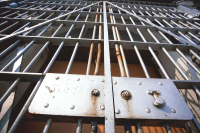Time to fix NCLB to better reflect the real world
Congress is likely to re-authorize the No Child Left Behind Act sometime this fall. If that is indeed the case, then we can only hope it makes some significant changes in this flawed bill that will help school systems use their resources to educate children instead of turning out students whose most memorable public school lessons will be a useless ability to ace bubble tests.
When Congress passed the NCLB in 2002, it wanted to create a set of national standards for all our public schools. The fundamental philosophy of the law — and one most everyone supports — is that all children can learn and no children should be expected to fail. No group of students deserved 12 years of babysitting no matter how difficult the challenge to teachers. In addition, another worthwhile component of the NCLB legislation was to set high certification standards for classroom teachers. Better teachers working to educate every child was to be the recipe for success.
But all was not so simple. The law’s mandate that all children — 100 percent — meet proficiency levels by 2014 is, quite simply, ridiculous. Yes, all children deserve good teaching and the opportunity to make progress each year; however, to go from that belief to the requirement that all kids meet a similar level of achievement is a quantum leap of unrealistic proportions.
Instead, NCLB should measure yearly progress. That is the best way to determine what is happening in the vast, complicated and ever-changing world of public education. Why is this a better way? Here are few examples:
What if a large number of students who are a couple of years behind all move into one school district? Since chances are those students won’t meet the achievement goals of NCLB, then the school system has little incentive to use every imaginable method to help these students.
And what about foreign, non-English speaking students? Right now they must meet the NCLB criteria after one year in public schools. Many of these students have way too many barriers — language, culture, economic — to overcome before they can begin meeting the NCLB standards. Again, it is just unrealistic.
Related Items
In Haywood County educators pointed out another flaw in the law. Once one subgroup fails to meet the adequate yearly progress goals, any student can choose to go to another school. The school is labeled as underachieving if, for instance, special needs students don’t meet goals. Now, resources must be spent to bus children to other schools, children who may have had nothing to do with the particular subgroup. Many believe those resources used to bus students to another school could have been better used to remediate those who did not make the mandated progress.
And of course, there’s plenty of evidence that the bill contributes to a problem that public schools across the country are facing — the reduction in arts education at all grade levels. Whereas music, dance or art may once have been the choice for elective classes, now those choices are disappearing as resources are targeted at programs to help students do better on standardized tests. This creates good test-takers but does little to prepare students for the real world.
Finding a standard by which all schools can be measured and ensuring children are not just pushed through the system are both honorable goals. The philosophy of NCLB is sound, but its particulars just aren’t workable.









